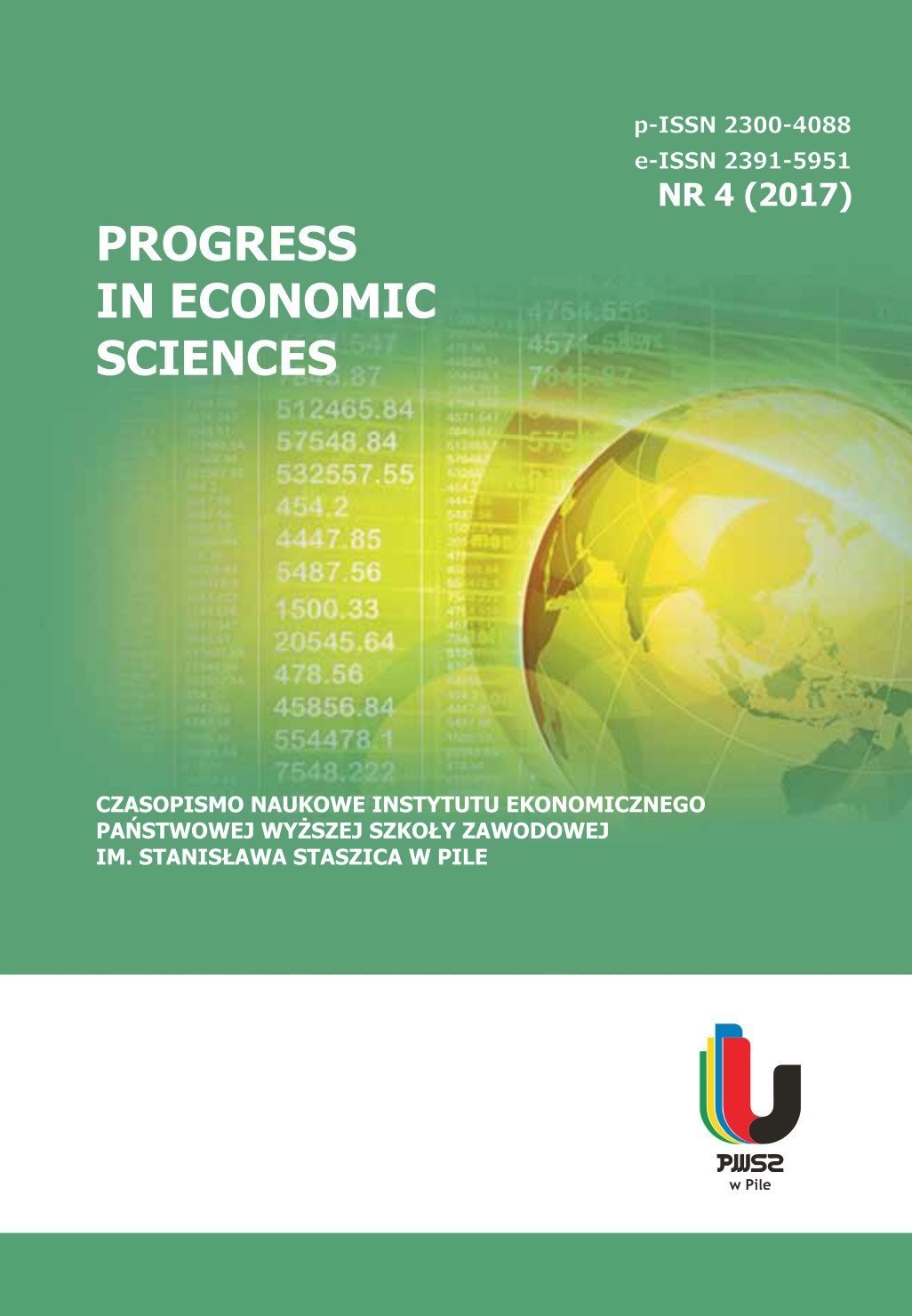Model oceny ryzyka powodzi przy użyciu rozmytego analitycznego procesu hierarchicznego (ang. AHP)
Abstrakt
Zrównoważony rozwój i katastrofy naturalne są ściśle ze sobą powiązane. Wpływ wydarzeń o charakterze katastroficznym na środowisko jest nadal trudny do określenia i takie straty są generalnie niedoszacowane. Rozwój nigdy nie jest neutralny w stosunku do katastrof: tworzy on, zwiększa lub redukuje ryzyko ich wystąpienia. Wybór właściwych metod i modeli matematycznych do oceny ryzyka w stosunku do określonych cech i funkcji danego systemu, a także dostępnych informacji i zasobów jest kluczowym parametrem w ocenie wiarygodności. Wielu autorów stosowało metody AHP przy ocenie ryzyka powodzi, ale niewiele publikacji dotyczy zastosowania rozmytej analizy wieloobiektowej w badaniach nad powodziami. W ostatnich latach, rozmyte podejście oceny ryzyka powodzi zyskało na znaczeniu. W niniejszej pracy przedstawiamy model rozmytego analitycznego procesu hierarchicznego (ang. FAHP) do oceny ryzyka powodzi. Zdefiniowano dwa wskaźniki zagrożenia powodzią, jeden oparty na czynnikach naturalnych i jeden na czynnikach antropogenicznych. FAHP został zastosowany w celu zilustrowania modelu.
Bibliografia
CHANG D. Y. (1996), Applications of the extent analysis method on fuzzy AHP, European Journal of Operational Research95 (3), 649–655, http://dx.doi.org/10.1016/0377-2217(95)00300-2.
CHENG C. H. (1997), Evaluating Naval Tactical Missile System by Fuzzy AHP Based on the Grade Value of Membership Function, European Journal of Operational Research Vol. 96 (2), 343–350, http://dx.doi.org/10.1016/S0377-2217(96)00026-4.
CRED (2015),The Human Cost of Natural Disaster – A Global Perspective, Brussels: Centre for Research of the Epidemiology of Disasters, p. 10.
DURÁN O., AGUILO J. (2008), Computer-aided machine-tool selection based on a Fuzzy-AHP approach, Expert Systems with Applications34 (3), 1787–1794, http://dx.doi.org/10.1016/j.eswa.2007.01.046
MORANKAR K. D. V., RAJU K. S., VASAN A., VARDHAN L. A. (2016), Fuzzy Multiobjective Irrigation Planning using Particle Swarm Optimization, Journal of Water Resources Planning and Management, ASCE, 142 (8), 1–11, DOI: 10.1061/(ASCE)WR. 1943-5452.0000657.
MEIXNER O. (2009), Fuzzy AHP group decision analysis and its application for the evaluation of energy sources, in Proceedings of the 10th International Symposium on the Analytic Hierarchy/Network Process, Pittsburgh.
RADIVOJEVIĆ G., GAJOVIĆ V. (2014), Supply chain risk modeling by AHP and FAHP methods, Journal of Risk Research, 17 (3), 337–352, http://dx.doi.org/10.1080/13669877.2013.808689.
SAATY T. L. (1977), A scaling method for priorities in hierarchical structures, Journal of Mathematical Psychology15 (3), 234–281.
SAATY T. L. (1980), The Analytic Hierarchy Process,New York: McGraw-Hill.
SAATY T. L. (1990), How to make decisions: the analytical hierarchy process.European Journal of Operational Research 48 (1), 9–26, http://dx.doi.org/10.1016/0377-2217(90)90057-I.
SCHUMANN A., PAHLOW M., NIJSSEN D., KLEIN B. (2011), Imprecise probabilities to specify hydrological loads for flood risk management, Risk in Water Resources Management, IAHS Publ. 347, 22–28.
SIMONOVIĆ S. P. (2012), Floods in a Changing Climate: Risk Management, Cambridge University Press.
STEFANIDIS S., STATHIS D. (2013), Assessment of flood hazard based on natural and anthropogenic factors using analytic hierarchy process (AHP), Nat Hazards, 68, 569–585, http://dx.doi.org/10.1007/s11069-013-0639-5.
VAN LAARHOVEN P. J. M., PEDRYCZ W. (1983), A fuzzy extension of Saaty’s priority theory, Fuzzy Sets and Systems 11(1–3): 229–241, http://dx.doi.org/10.1016/S0165-0114(83)80082-7.
WANG Y- M., LUO Y., HUA Z. (2008), On the extent analysis method for fuzzy AHP and its application, European Journal of Operational Research186 (2), 735–747, http://dx.doi.org/10.1016/j.ejor.2007.01.050.
World Bank (2013), Building Resilience: Integrating Climate Disaster Risk Development. Washington DC, USA.
ZADEH L. A. (1965), Fuzzy sets, Information and Control 8, 338–353.
ZHANG H., LIU D. (2006), Fuzzy Modeling and Fuzzy Control, Birkhäuser, Control Engineering.
ZHU K – J., JING Y., CHANG D. Y. (1999), A discussion on extent analysis and applications of fuzzy AHP, European Journal of Operational Research 116 2, 450–456, http://dx.doi.org/10.1016/S0377-2217(98)00331–2.
ZIMMERMANN H. J. (2001), Fuzzy Set Theory and its Applications, 4th Edition, Springer.
Artykuły w Progress in Economic Sciences w wersji drukowanej i internetowej publikowane są w oparciu o zasady Open Access na licencji CC - Creative Commons Uznanie autorstwa, autorzy mogą dowolnie dysponować tekstami w wersji opublikowanej w czasopiśmie.


